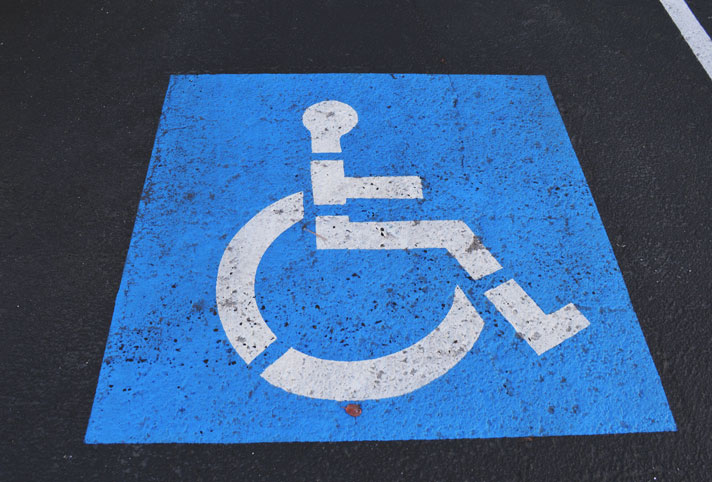What Are Short-Term, Long-Term, and Social Security Disability Benefits?
If you’ve been disabled, you will likely seek short-term, long-term, and/or Social Security disability benefits to compensate for your inability to work. But what are the advantages and disadvantages of each benefit system? Can you receive payment from more than one simultaneously? Short-Term Disability Insurance Short-term disability insurance is private insurance that can be provided by […]

May 8, 2017
If you’ve been disabled, you will likely seek short-term, long-term, and/or Social Security disability benefits to compensate for your inability to work. But what are the advantages and disadvantages of each benefit system? Can you receive payment from more than one simultaneously?
Short-Term Disability Insurance

Short-term disability insurance is private insurance that can be provided by your employer or purchased by you. It covers you for around three to six months after you become disabled.
Since short-term disability covers a short period of time, rates tend to be cheaper than for long-term disability. Payments typically start soon after the individual has been disabled and can even cover 100 percent of the individual’s normal wages, at least for the first few payments.
However, short-term disability insurance isn’t as customizable as long-term disability insurance. And, of course, you won’t be covered for your disability for very long: once your policy runs out in three to six months, that’s it—unless you’ve purchased long-term disability insurance.
One of the most common uses of short-term disability insurance is for maternity leave or paternity leave in cases where paid family leave isn’t covered by the employer.
Long-Term Disability Insurance

Long-term disability insurance can be provided by your employer, or you can purchase it for yourself. It covers you if you have a disability that lasts longer than six months.
Rates for long-term disability tend to be more expensive than for short-term, but long-term disability is more customizable to your needs and can last not just months, but years. However, benefits usually only cover about 70 percent of your salary or less, and benefits don’t start until three to six months after you’ve been disabled, regardless of whether or not you have short-term disability to cover those in-between months.
Social Security Disability

Social Security disability (SSD) is provided by the Social Security Administration (SSA) of the federal government. You must be approved for SSD before you can begin receiving payments. In order to be approved, you must have a solid work history to prove that you’ve paid into the system with your Social Security taxes, and you must be able to prove that your disability keeps you from working any job, not just the job you had previously.
You are not eligible for SSD benefits for the first five full months of your disability. However, that doesn’t mean you shouldn’t apply within the first five months. It just means that, if you are later approved, your back pay (the benefits you accumulated while waiting from the time you were disabled to the time you were approved) will only extend to after the first five full months you were disabled.
It takes a long time to be approved for SSD. In Indianapolis, people typically have to wait an average of 19 months just to get a hearing, according to the SSA’s most recent available statistics. That doesn’t include the months spent prior to that applying initially or appealing a denial.
Can You Receive Multiple Payments?

You cannot receive short-term disability and long-term disability insurance simultaneously. You can, however, receive long-term disability and SSD simultaneously. (It is unlikely that you would receive short-term disability insurance and SSD at the same time because, by the time you were approved for SSD, the three to six months you were using your short term disability would have already passed.)
Even though you can receive long-term disability insurance and SSD at the same time, your payments likely will remain the same. That’s because your long-term disability insurance can be reduced by the amount of payment you’re receiving from Social Security. Your long-term disability insurance carrier may actually require you to apply for SSD because of this.
For example: if you are receiving $2000 a month from your long-term disability insurance provider and you get approved for $700 a month from SSD, your long-term disability insurance provider will reduce your payment to $1300 a month. The $1300 from your provider and the $700 from the SSA will still equal the $2000-per-month payment you were receiving previously.
Your long-term insurance company may also lay claim to all of the back pay you receive from the SSA, minus your attorney fees (since disability attorney fees are taken exclusively from your back pay).
Why Apply for Social Security Disability?

If you have been disabled, it may be a good idea to consider applying for Social Security disability benefits if you:
- Have a solid work history
- Cannot work
- Only have short-term disability insurance
- Have no disability insurance
- Are required to apply by your long-term disability insurance provider
Even if you do not have a solid work history, there are other forms of disability assistance from Social Security for which you may still qualify.
If you call Hensley Legal Group or contact us online, we can offer you a free consultation, answer your questions about applying for Social Security disability, and help you consider your options moving forward. Call today, and be sure to download our free eBook, Eight Mistakes to Avoid When Filing for Social Security Disability Benefits.